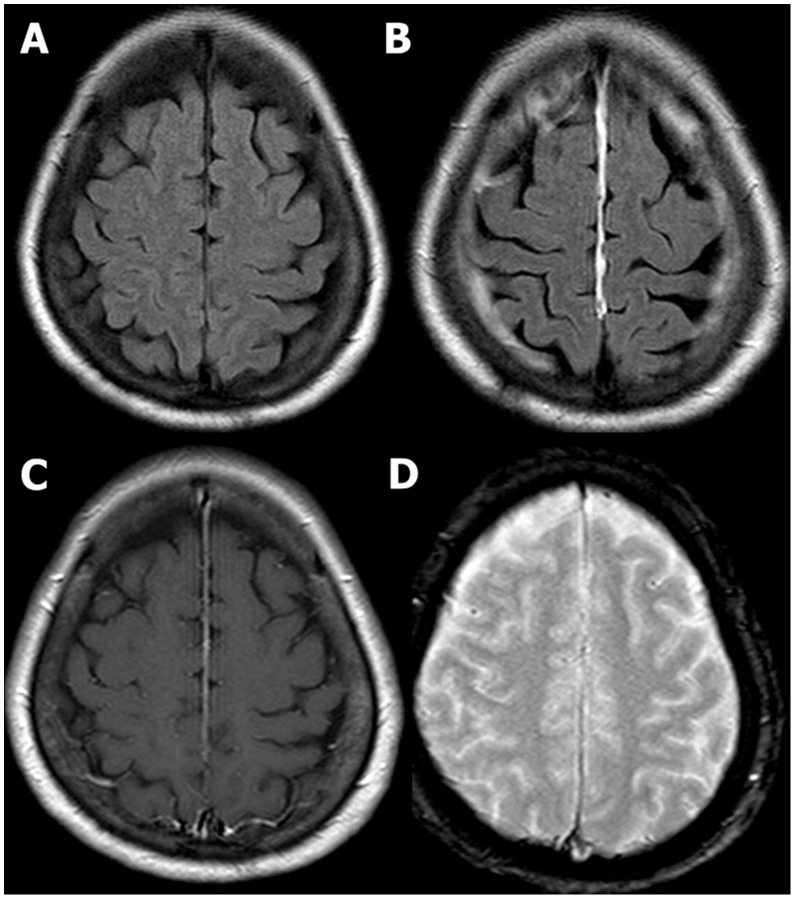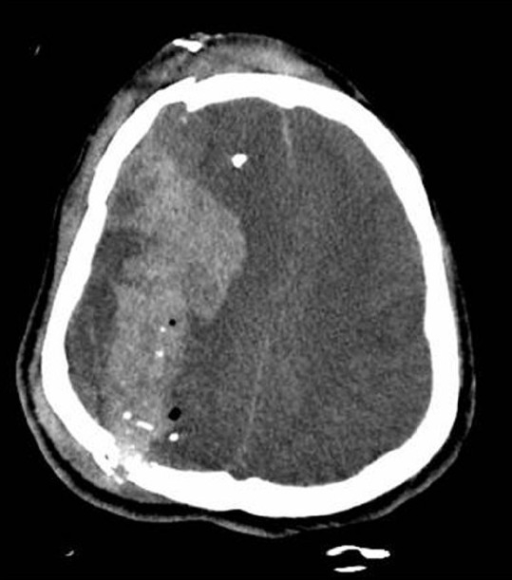Playlist
Show Playlist
Hide Playlist
Head CT: Canadian Criteria & Rules
-
Emergency Medicine Minor Head Injury.pdf
-
Download Lecture Overview
00:01 And the set of rules that we use for adults are the Canadian head CT rules. 00:04 These applied to any patient who has a head injury, with either loss of consciousness, amnesia, or confusion afterwards. 00:13 So we wouldn't even be applying the Canadian rules, to patients who are completely alert, appropriate, didn't lose consciousness remember everything. 00:21 We wouldn’t even be talking about those patients. 00:24 Those patients would not be CTed, But if they had a head injury and they have some subtle complicating factors, such as losing consciousness or being confused afterwards. 00:33 We can apply these rules to them. 00:35 They have to be in the age range from 16 to 65. 00:38 So these rules do not apply to children, and they do not apply to older adults, that's a very important because again, older adults have much higher risk of bad outcomes with minor head injury. 00:49 And we wanna be more aggressive about imaging those patients. 00:53 They also do not apply to any patients who are on anticoagulation or have any evidence of post-traumatic seizure activity. 01:00 So if your patient fits into one of these categories, you would not want to use these rules, you would wanna go ahead and obtain imaging. 01:08 But assuming they're healthy, they have no seizure, they’re in the appropriate age range. 01:13 And they just maybe have a little subtle confusion or amnesia after the event. 01:18 The Canadian head CT rules are for them. 01:22 So the criteria that should prompt you to get a head CT, include any abnormal GCS more than 2 hours after the injury. 01:31 So maybe the patient comes in immediately after the injury. 01:35 And they're a little bit off, they're a little bit confused. 01:38 Their GCS is 14. 01:39 We would expect their sensorium to clear, and we would expect them to have a normal GCS by 2 hours. 01:45 If they don't we wanna go ahead and image those patients. 01:49 If they have any evidence of open or depressed skull fracture, And we'll talk about what clinical science we'd be looking for in just a moment. 01:56 We wanna go ahead and CT. 01:58 So we wanna really get a good look at these patient's heads. 02:00 We wanna palpate all over the skull and make sure that we're satisfied that there's no evidence of fracture. 02:07 If they have any signs of basilar skull fracture, which are listed right here, there's a whole, a laundry list of them. 02:13 But basically any bleeding in the ears, any drainage of CSF from the nose or the ears, bruising under the eyes, any kind of neurologic deficit, vertigo, tinnitus, nystagmus. 02:29 These are all things that should make us concerned about skull based injury. 02:33 And we would always wannna image those patients. 02:36 Patients who have multiple episodes of vomiting we wanna image, it's not uncommon to vomit once after a head trauma, but you shouldn't have persistent vomiting. 02:44 So if you vomit more than once, you probably deserve a head CT. 02:49 Retrograde amnesia greater than 30 minutes prior to the event, should also prompt to head CT, and dangerous mechanisms, which include pedestrian struck by motor vehicles, falls greater than 3 feet, and motor vehicle collisions where the occupant is ejected out of the car. 03:06 These are all mechanisms that are associated with higher risk of a bad outcomes and we wanna image those patients. 03:13 Assuming your patient has none of those findings. 03:16 The sensitivity of the Canadian rules is really pretty good for excluding clinically important brain injury. 03:22 Sensitivities have been reported anywhere from 83 to 100%. 03:26 And our 100% in all studies for any injury requiring neurosurgical intervention. 03:32 So basically if your patient has a negative checklist on the Canadian C-spine rules. 03:39 They will not need any neurosurgical procedure, and you can feel pretty confident in that based on the studies. 03:45 So there are no false negatives with the Canadian rules. 03:48 Every injury's caught it's very safe to use as a decision point for whether or not your patient needs imaging. 03:55 By contrast the specificity isn’t so great. 03:58 So the specificity is 76% for injuries requiring surgery. 04:03 And only 50% for clinically important brain injuries, which are those that yield some kind of long-term neurologic impairment. 04:11 Now, before you start getting up in a half about the Canadian rules. 04:16 I'll tell you this is a screening test. 04:17 The purpose of screening test is to have very, very high sensitivity. 04:22 So we can catch every single person with the disease process. 04:25 And when you cast a wide net and design a test for high sensitivity, that's always gonna result in a lower specificity. 04:33 We actually want false positives, because having false positives in the mix. 04:38 Means that we're not getting any false negatives, we're not missing anybody who actually has the disease process. 04:44 So actually a specificity of 50% for a screening test is pretty good. 04:50 And I think we can feel pretty confident in the Canadian rules, as an adjunct to our clinical decision-making to help us decide to whether or not imaging is warranted. 05:01 So let’s go back to our patient. 05:03 So her GCS is 15 on presentation, she's not had any vomiting. 05:08 Her mechanism was not dangerous, let’s just say that she was in a standard motor vehicle collision and struck her head on the steering wheel, but she was not ejected from the car, she was not a pedestrian struck. 05:20 She has no signs of open or depressed skull fracture. 05:24 All she had was that laceration on her head. 05:26 She has no sign of basilar skull fracture. 05:28 And her amnesia to the event is anterograde. 05:32 So she does not need a CT. 05:34 Now, a lot of people are confused about anterograde versus retrograde amnesia. 05:39 So just a review on that, Anterograde amnesia means that you can’t form new memories. 05:44 So you get hit in the head and then you don't remember what happened around the time you got hit in the head. 05:51 You keep asking, "What happened?" "Where is my car?" "Was anybody else hurt in the crash?" And you get those questions answered, and then five minutes later you’re like, "Oh my gosh!" "Where is my car? "Was anybody else hurt in the crash?" "What happened?" These are patients who can’t form new memories. 06:06 They can't recall the events surrounding their injury. 06:10 This is very common and not particularly concerning. 06:13 By contrast, retrograde amnesia is the loss of memories that you had immediately prior to the injury. So the patient can't remember what has lead to the accident, what he or she was doing just prior to the head injury, for example if there was a fight between him and another person that lead to the injury. 06:34 Long-term memory, on the other hand, is expected to be intact even in a patient with retrograde amnesia.
About the Lecture
The lecture Head CT: Canadian Criteria & Rules by Julianna Jung, MD, FACEP is from the course Trauma (Emergency Medicine).
Included Quiz Questions
According to the Canadian Criteria for Head CT, a cranial scan is indicated in a patient with head injury whose GCS score remains below 15 after how many hours?
- Two hours
- Half an hour
- One hour
- Three hours
- Four hours
What is the sensitivity of the Canadian CT Head Rule for injuries requiring neurosurgery?
- 99-100%
- 51%
- 76%
- 62%
- 82%
What type of amnesia is commonly seen in a mild traumatic brain injury?
- Anterograde amnesia
- Retrograde amnesia
- Dissociative amnesia
- Lacunar amnesia
- Transient global amnesia
Customer reviews
5,0 of 5 stars
| 5 Stars |
|
5 |
| 4 Stars |
|
0 |
| 3 Stars |
|
0 |
| 2 Stars |
|
0 |
| 1 Star |
|
0 |





